Slowly but surely, climbing in Greece has gained traction. After years of just Kalymnos or Meteora, dozens of other beautiful Greek cliffs with immense potential are finally being developed, with increasing emphasis on safe bolting practices. Furthermore, the relatively easy access, adequate infrastructure, stunning surroundings, and, more often than not, variety of grades, have made Greece an up-and-coming climbing destination for climbers of all levels. As a result of this momentum, three new guidebooks were published in Greece this year alone. The 2nd edition of our very own Greece Sport Climbing guidebook–a project years in the making–is complemented by two smaller new topos: the Meteora and Theopetra Sport Climbing Guide, by Vangelis Batsios, and Argolis: Rock, Sea, Sun, by Hans & Jeannette Weninger.
Here’s a look inside each guidebook.
——
1. GREECE SPORT CLIMBING: THE BEST OF
By Aris Theodoropoulos & Katie Roussou, May 2017

The 2nd edition of the Greece guidebook, which features our roundup of the best crags for sport climbing in the country, was published a little over two years after the (pleasantly surprising) success of the 1st edition. A lot of climbing development has happened in the interim, hence the guidebook has been significantly revised and expanded.
• Where to buy:
Online or at one of the following locations:
Athens
Alpamayo Pro
The Wall
Rockway
Polo
Varasova
Captain Del Mare
Leonidio
Rodomelo
Walk for Fun
Kalymnos
Wild Sport
Kalymnos Adventure Center
• How do the two guidebooks compare (1st edition vs. 2nd edition)?
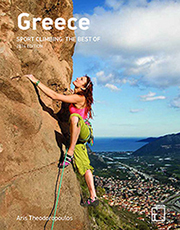
2014 (1st edition)
Pages: 320
App Guide included: No
Routes: Approximately 1700 sport routes
Contents
CENTRAL GREECE
Meteora
Pyli Little Gorge
Mouzaki
Almyros
ATHENS AREA
Hasia Cave
Acharneis
Mikri Varasova
Mavrosouvala
Sesi
Vrachokipos
Lelaki
Chaos
PATRAS AREA
Chatzouri
Alepochori
Spartia
Varasova
Kleisoura
OTHER PELOPONNESE CRAGS
Nafplio
Leonidio (272 routes)
Kyparissi (25 routes)
Zobolo
Lagada
Nedousa
Kardamyli
AEGEAN ISLANDS
Anafi
Symi
CRETE
Voulismeno Aloni
Plakias
Tersanas Cave
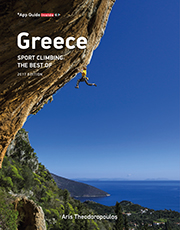
NEW: 2017 (2nd edition)
Pages: 435
App Guide included: Yes
Routes: Approximately 2600 sport routes, plus dozens of multi-pitches
Contents
CENTRAL / NORTHWEST GREECE
Meteora (+ 2 new routes)
Pyli Little Gorge (revised + new routes)
Mouzaki (revised + new routes)
Almyros
Kipoi (new addition)
ATHENS AREA
Hasia Cave
Acharneis
Mikri Varasova
Mavrosouvala
Sesi
Vrachokipos
Lelaki (revised)
Chaos
PATRAS AREA
Chatzouri (revised)
Alepochori (revised + new routes)
Spartia (revised)
Kalogria (new addition)
Varasova
Kleisoura (revised + new routes)
Mytikas (new addition)
OTHER PELOPONNESE CRAGS
Frygani (new addition)
Nafplio (expanded to include new crags Anatoli and Palamidi)
Leonidio (revised and expanded to 700 routes)
Kyparissi (revised and expanded to more than 200 routes)
Zobolo (revised + new routes)
Lagada (revised + new routes)
Nedousa
Kardamyli
AEGEAN ISLANDS
Anafi
Symi
CRETE
Voulismeno Aloni
Plakias (expanded to include new sub-sector Kalypso)
Tersanas Cave
——
2. METEORA AND THEOPETRA SPORT CLIMBING GUIDE
By Vangelis Batsios, May 2017
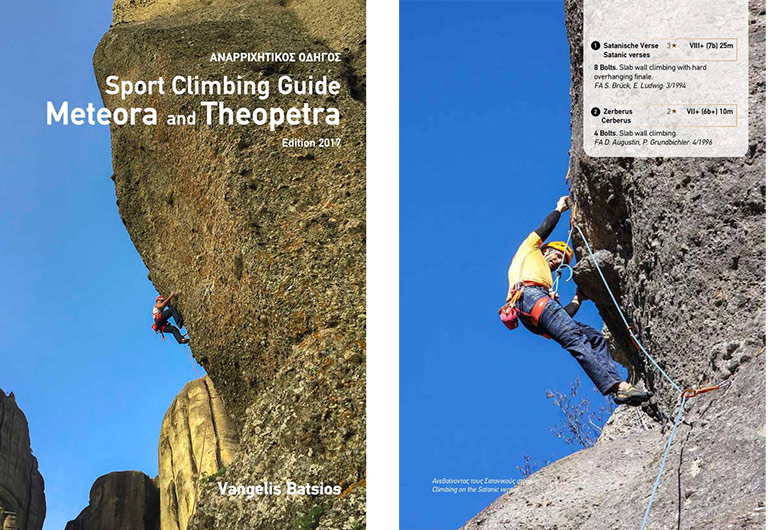
A small practical guide by Vangelis Batsios, a climber born and raised in Meteora who, literally, knows each rock by name. Says Vangelis: “Because sport climbing has become increasingly popular in recent years, it helped me decide to create a guidebook for just the sport routes in Meteora and Theopetra (a cliff only 10km outside Meteora, with good quality limestone). The book was ready in late May 2017, after two years’ worth of work. The guidebook includes 118 select sport routes from Meteora and 131 routes from Theopetra. 2.00 EUR from the sale of each guidebook will be set aside for bolts and route maintenance.”
• Where to buy: Only in Meteora at the moment.
——
3. ARGOLIS: SEA, ROCK, SUN
By Hans & Jeannette Weninger, Sept 2017
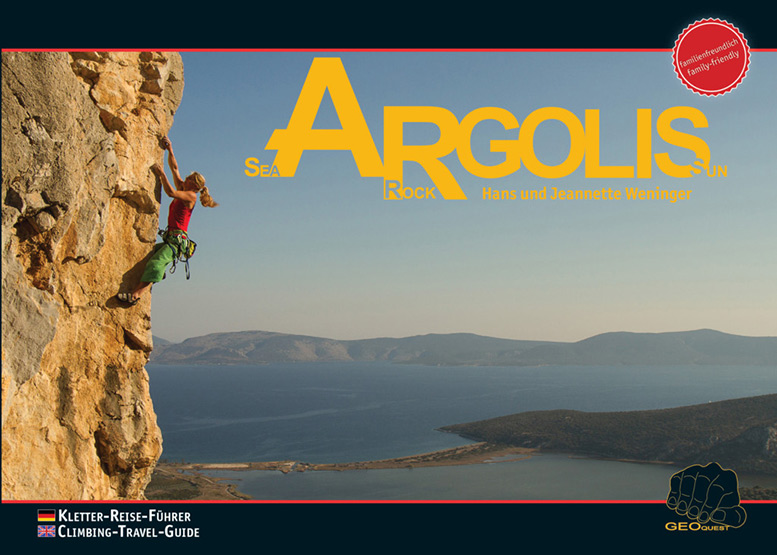
This is a bilingual (English/German) climbing and travel guide to Argolis in Eastern Peloponnese. According to the publishers: “The peninsula of Argolis offers varied landscapes, all kinds of cultural highlights, great beaches and, of course, climbing areas that can hardly be more different. The book describes both, climbing and tourism. Two hours south of Athens one will find the peninsula Argolis with its climbing crags. It is on the way to Leonidio for those traveling southbound. Most of the areas are at the sea or not far from it. Even though there are enough hard routes the focus is on the moderate and lower grades making this part of the country the perfect family destination. The book describes therefore the suitability of the approach as well as the base of the cliff for little children. In this guide one will also find an attractive area near Athens and a whole new one at Corinth. We have included these climbing areas, because they are en-route, so to speak. 240 pages, full color, photo topos, detailed maps and descriptions, comics of Enrico Dudek (Enni).”
The Argolis guidebook includes the following sectors:
• Nafplio (Promenade, Palamidi, Anatoli, Katakrimeni)
• Vivari
• Ortholithi
• Didima (Didima Hinterland, Rock of Ages, Flower Power, Goat)
• Frachti
• Katafiki
• Pillars of the Wind
• Thermissia
• Methana
• Corinth: Frygani (Bonus Area), Mylos (Bonus Area)
• Athens (Spilia Daveli – Bonus Area)
• Where to buy: Online




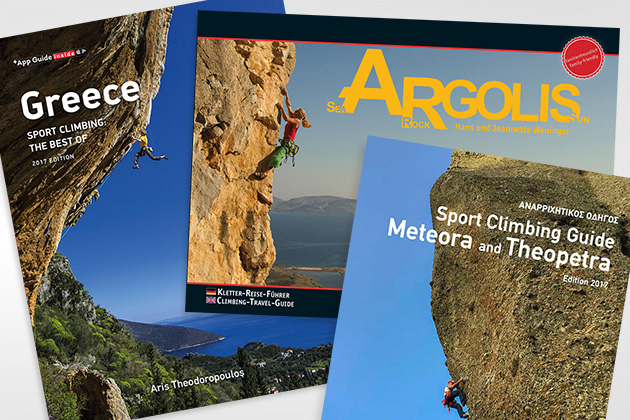
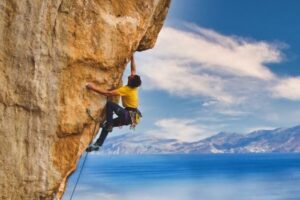
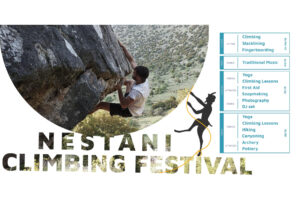
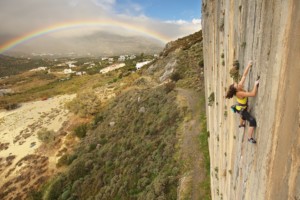
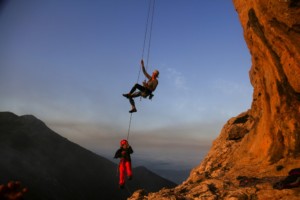

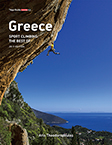
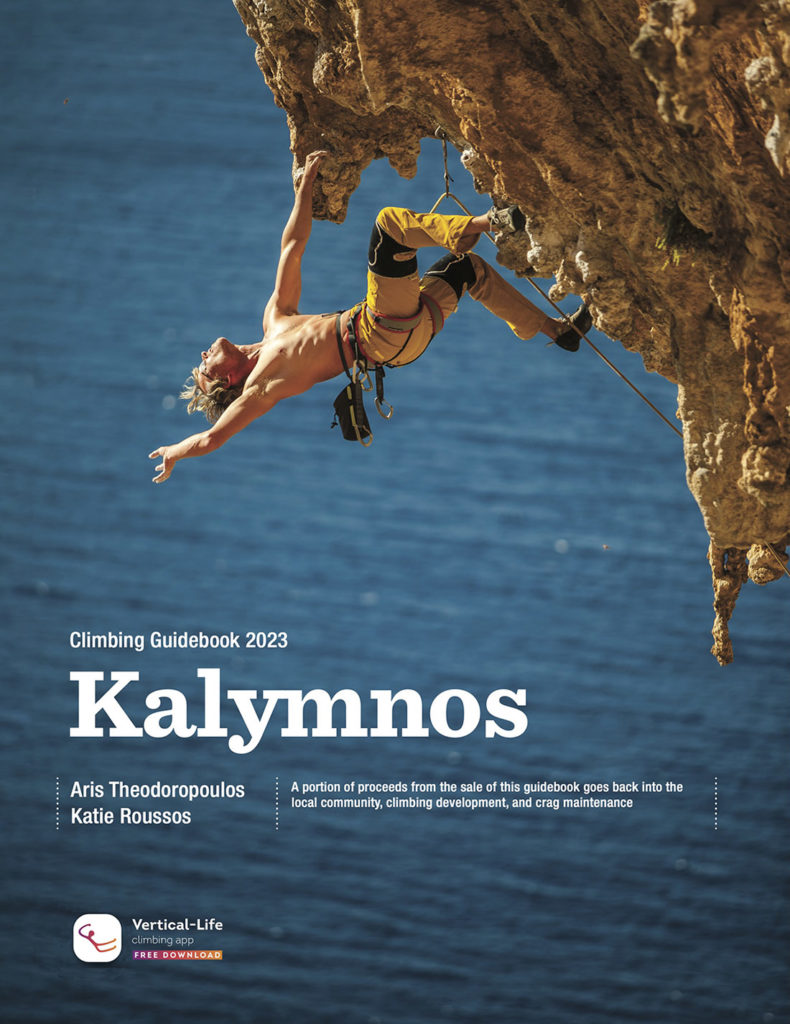

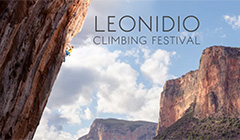
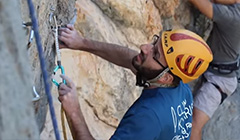
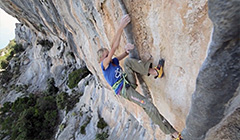
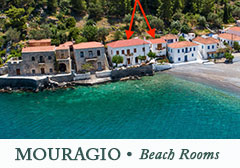
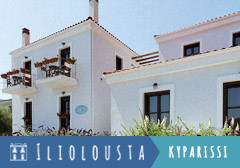
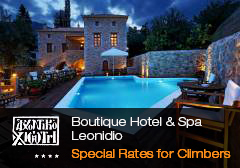
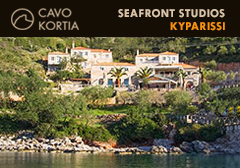
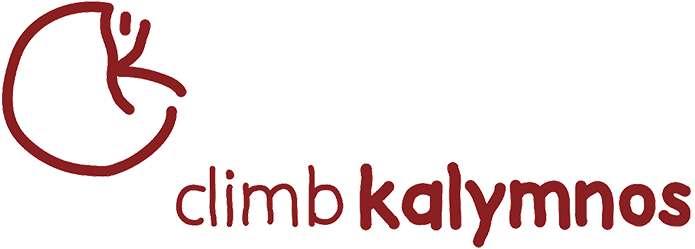

7 Comments
genadi borisover
Hello.
We would like to get to the Crete to climb in the Voulismeno Aloni area ..
This is our first time in Crete.
Does your Climb Greece guide also have this area?
If not, where can I find it?
Thanks
Genadi
Aris Theodoropoulos
Hi Genadi,
yes we cover Voulismeno Aloni at our guidebook.
have fun at Crete,
Aris
Neil
Hi Aris
I have a few questions about these guidebooks, and also the Kalymnos one which will soon have competition in the form of the Rockfax guide. As consumers I think it’s important that all publishers provide this information so that we can choose wisely.
How is bolting financed at these crags?
Are the guidebooks produced in concertation with local equippers?
Do they contribute to the bolting efforts?
Thanks, Neil
Aris Theodoropoulos
Hi Neil,
Thank you for the question. It gives us the opportunity to inform climbers about some of what we do that they may not be common knowledge. But I can only speak for my own guidebooks, i.e. Kalymnos and Best of Greece—not the Meteora or the Argolis guidebooks, which are made by others.
In response to your questions:
1. How is bolting financed at these crags?
Generally, bolting for new routes at most crags (both in Kalymnos and elsewhere in Greece) is financed by the equippers themselves, but local municipalities (especially smaller ones) have increasingly been financing new routing projects. As an example, the municipalities in Leonidio, Kyparissi, and Kalymnos (among others) have all financed new routing on occasion.
My personal contribution is this: Since I started equipping routes in the late ‘80s I have largely paid for my bolts out of my own pocket. Then, starting with the publication of my first guidebook in 1996 (Varasova) I began contributing a large amount of money towards bolting—often more than I could afford. For many years I did not make any money from my guidebooks; in fact, I paid extra money out of pocket for bolts. As the number of routes increased (especially in Kalymnos) and the guidebooks became bigger, the need for rebolting also increased. So I started contributing a larger sum of money for bolts, with a particular emphasis on rebolting/maintenance over new routing, to ensure the hardware used is placed safely and appropriately, that it is never dangerously worn out, and that it is always up to the latest UIAA specifications. I do not keep all these bolts to myself, nor do I do all the work myself. I work closely with a handful of experienced friends, all volunteers, as well as provide bolts and anchors to other experienced equippers. Please note two important things: First, I do not give bolts to just any enthusiastic, eager climber who is willing to help. I always make sure the persons getting bolts from me are experienced, know what they are doing, and follow the equipping guidelines set by the Greek Federation of Mountaineering and Climbing. Second, the bolts I buy are always UIAA-certified and in compliance with the latest safety standards specific to the climate and environment of Greece. Most recently I have been buying Raumer marine grade 316L bolts. Since 2010, without fail, I pay well between €3500–€5000 for bolts and anchors every year—regardless of whether or not my guidebooks turn a profit.
2. Are the guidebooks produced in concertation with local equippers?
Yes, to the very best of our ability. Collaboration with local equippers is always a priority, and in my opinion it is the only way to produce a guidebook of the highest quality. Again, I can only speak for my Best of Greece and Kalymnos guidebooks. Regarding Kalymnos, well, I have been one of the main equippers since climbing started there in 1999, but I have also worked closely with the local municipality ever since. Furthermore, I have a close working relationship (and in many cases close friendships) with the vast majority of the other equippers of routes on Kalymnos.
In the rest of Greece, I collaborate with the local communities and/or equippers in most crags featured in the guidebook (as well as many other crags not featured in the book, such as, most recently, Tarsos and Agios Petros). There is a solid core of experienced equippers and friends in Greece with whom I am lucky to collaborate often, such as Yiannis Torelli (Patras, Varasova, Mytikas, Nedousa, Leonidio, Lagada, Zobolo, Kyparissi); Dimitris Titopoulos (Athens, Zobolo, Frygani, Kyparissi, Agios Petros, Solomos, Crete); the Remy Brothers (Leonidio, Kyparissi, Zobolo, Varasova, Nafplio); George Kopalides (Leonidio, Kyparissi); Claude Idoux, Angy Eiter, Charlotte Durif (Kyparissi); Simon Montmory (Leonidio); Aristos Thanopoulos (Patras, Lagada); Vangelis Batsios, Christos Batalogiannis (Meteora); Peter Lappas (Kipoi); Thomas Michaelides, Antonis Skevofylakas (Athens); Georgis Milias (Symi); Kostas Tsoukleidis (Nafplio); Tasos Georgitsis, Pasquale Zafiriadis (Pyli, Mouzaki); George Malamas, Stavros Psiropoulos (Nedousa, Kardamyli); and, last but not least, our deceased friend Chris Boukoros (Almyros). Sometimes we equip routes together, sometimes I finance part of their new routing, sometimes I advise or train them on best equipping practices, and they supply info I need on their home crags to feature them in my guidebooks. I always run the final drafts of their local crags by them before publication, and take their feedback very seriously.
3. Do they contribute to the bolting efforts?
See my answer to your question #1 above. In short, yes. A significant part of the proceeds from my guidebook sales every year is used to buy bolts and anchors of the highest quality standards. Besides me, other qualified equippers get bolts from me for new routing and maintenance of existing routes. This adds up to thousands of bolts and hundreds of anchors. (We started to keep an online log on Climb Kalymnos a few years ago recording the bolts, anchors, and labor we contributed, but it quickly became unsustainable. It added up quickly, and unfortunately neither of us had the time to keep it updated.) Countless equippers in Kalymnos and the rest of Greece can attest to the support they have received by me personally, whether in bolts, anchors, or actual equipping hours (equipping and rebolting are both very strenuous, unglamorous, highly specialized and demanding jobs that are often underestimated). I feel it is also important to note that all equipping or maintenance I am involved in happens in compliance with the equipping and safety guidelines of the Hellenic Federation of Mountaineering and Climbing (eooa.gr), with which I have had a close working relationship since the mid-1980s.
I hope I have sufficiently answered your questions. In the next few months, we will follow up with a more in-depth article detailing exactly what we do and all the ways in which climbers support Greek climbing by buying one of our guidebooks.
Lastly, some related information can also be found here http://climbkalymnos.com/climbing/#maintenance and http://climbkalymnos.com/climbing/#history.
Cheers,
Aris
Neil
Thanks Aris for taking the time to reply!
As you undoubtedly know, the British guidebook publisher Rockfax is bringing out a competing Kalymnos guidebook in the coming weeks. I have been banned from UKClimbing forums for criticizing the Rockfax business model, particularly with regards to their Haute Provence guide (UKC and Rockfax are the same company), so I appreciate this opportunity to discuss how your guidebooks operate.
In a recent thread, Alan James, who runs UKC/Rockfax, admitted mistakes had been made with the Haute Provence guide, but claims they now operate in an ethical manner. In the same thread, he hinted that Greek guidebook publishers (I assume he meant you) were guilty of jaw-dropping examples of malpractice. The exact quote is: “Kalymnos is very complicated. I am not able to go into details here because what I have found out since starting this project has dropped my jaw to the floor on a number of occasions.”
So basically he is discrediting your Kalymnos guidebook, while not providing any evidence, or even details of what he is criticizing you for. This doesn’t give the consumer much clarity when trying to decide which topo to buy!
This is basically what prompted my questions and I appreciate your long reply. However, I think the detailed report you are planning to bring out will be welcomed by all climbers who visit Kalymnos. In this age of competing guidebooks, it is important for all parties to provide clear information on what they do to support the local bolting efforts, including time and money spent on all related activities.
In any case, thank you very much for the immense amount of work you have invested in climbing in Greece over the years. I hope I’ll be able to visit soon 🙂
Sam
Posts are now being deleted from the latest UKC Kalymnos thread and at least one user has been banned for indicating a link to this page.
Dominic Oughton
Praise for “Greece Sports Climbing”
We had a fabulous 2-month road trip through Greece, using Aris’ bumper fun book, visiting and enjoying most of the climbing areas it covers. There’s so much more to Greek climbing than The Big K.
Check out our blog for some inspiration https://rockaroundtheworld.co.uk/2017/11/11/highlights-from-a-balkan-odyssey/